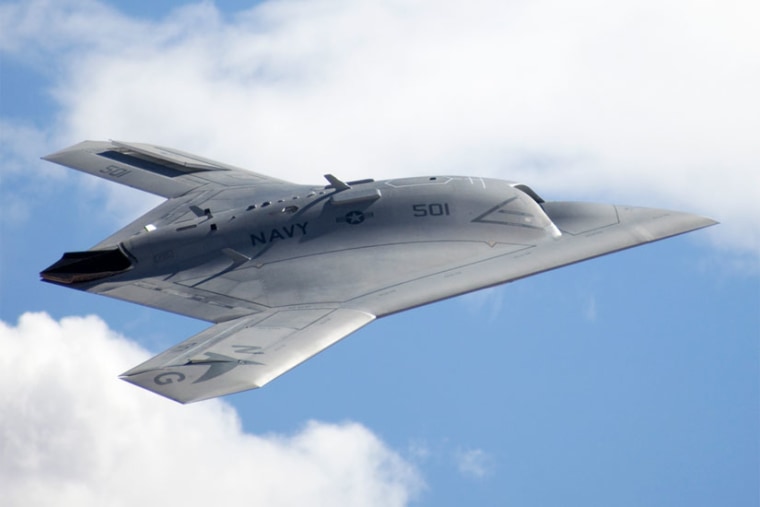Navy officials unveiled their new drone strike fighter this week, the UFO-like X-47B. This remote-controlled vehicle will ultimately be flying missions from the deck of an aircraft carrier at sea. This first demonstrator model, now undergoing trials at the Patuxent River Naval Air Station in Maryland, isn't armed with weapons yet, but officials say it will have that capability.
Watch a test flight of the X-47B here
Even more exciting than the X-47B is the technology to fly aircraft with a laptop and click of the mouse instead of a joystick and human pilot. Would that same technology translate to fly commercial passenger or cargo aircraft?
Aviation experts say it's not the technology that's holding back that kind of flight; it's the risk.
"You could build one. The question is: Would you be allowed to operate it?" said John Hansford, director of the Center for International Air Transportation and a professor of aerospace engineering at the Massachusetts Institute of Technology.
"We already have the technology to take an existing commercial-scale airplane — say an Airbus 320 or Boeing 777 — and convert it to unmanned operations," Hansford added. "However, it's not clear yet that you could guarantee the safety of that to a level that would be acceptable for general public transport. If it has a problem, then (it) becomes hazard to people on the ground."
For the past century, aviation technology has migrated from the military to commercial worlds. Jet engines, metal bodies and flight controls were all developed first by the Pentagon.
In the past decade, the Pentagon has also pushed for the development of unmanned aerial vehicles, or drones, from the Predator that launches Hellfire missiles at targets in Afghanistan and Yemen, to tiny backpack-sized craft that allow soldiers to peer over the next hill or into a village. U.S. Marines are also now using a remote-controlled helicopter, called the K-MAX, to carry food and supplies to remote bases in Afghanistan.
The military environment is already more dangerous than domestic airspace, Hansford says, so using a drone to carry cargo isn't that big of a leap. But carrying passengers is another matter.
"The real problem comes when things go wrong," Hansford said. "What happens when an unmanned aircraft is flying along and sunspot activity takes out their GPS navigation? What does the airplane do?
"Part of the reason we are comfortable having humans operate airplanes is we believe humans can help compensate when there is a problem that is unanticipated,.
PHOTOS: Top Unmanned Aerial Vehicles Taking Flight
Some aviation researchers are trying to combine the best of human and robot pilots in something called an "optionally piloted aircraft." That's the goal of the Centaur, a unique craft developed by Aurora Flight Sciences in Manassas, Va.
The Centaur's cockpit has one set of controls for a human pilot on one side and a robotic mechanism on the other that can be operated remotely via laptop from the ground. "You use either a keyboard or mouse to set the heading, altitude and airspeed that you want," said John Langford, chief executive officer and co-founder of Aurora. Langford ran the first remote test flight of Centaur last month. "You hit a button that says launch and it just takes off."
Aurora has spent a decade developing Centaur. Langford hopes to use it to help scientists explore remote polar regions where it's too dangerous to fly, or perhaps domestically as a way to shuttle air taxis around the country without putting a pilot in each plane.
Drones will be carrying passengers sooner than we think, Langford predicts. Perhaps a robot-copter would carry a wounded soldier back from the front lines when no pilots are available for a Medevac. "The first time it probably won't be a big giant planned experiment," Langford said. "It will be a spot decision on the ground, and it will be one of those days that gets marked in history."
